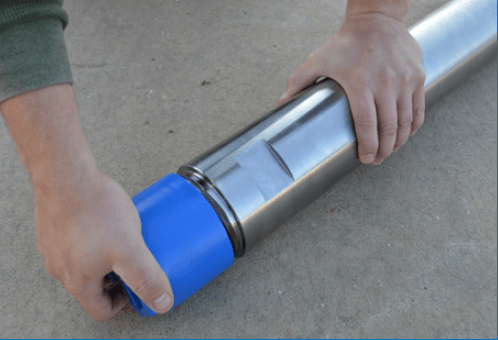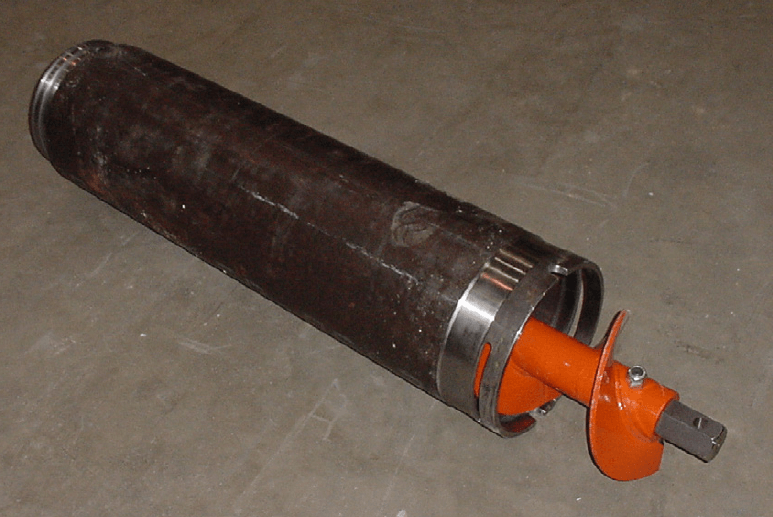Every boring contractor wants their equipment to perform at its best. Efficient machinery means more efficient drives, faster job completion, fewer repairs, and, most of all, improved profit.
However, like any type of mechanical equipment, guided boring machines (GBM) must be well-maintained to deliver the best possible performance.
In this article, we will take a look at some of the guided boring machine maintenance operations that you can implement to get the most out of your GBM. (Read also: Extending the Life of Your Drill Pipe.)
Guided Boring Machine Maintenance Before the Job
Before the beginning of each job, it is essential to perform routine maintenance checks to ensure that your machinery is ready to hit the ground running upon arrival at the job site.
Perform a Basic Visual Inspection
Before drilling begins, a simple visual inspection of the GBM can help spot issues that can manifest into bigger problems during drilling operations. When performing visual inspections, take note of any worn or damaged parts.
GBMs consist of numerous moving parts that are subject to wear and tear. As such, it is best to keep a list of spare parts that require frequent replacement. O-rings and filters are just some of the items that should be kept in ample supply in your inventory.
Should any faults turn up during visual inspections, they can be easily replaced with the inventory supply. Your accountant or purchasing manager should be able to inform you of which GBM parts are ordered most often.
Set Regular Times for Maintenance
Guided boring is a demanding job for even the toughest equipment. (Read also: An Unboring Yet Basic Guide to Boring.) As such, be sure to perform routine maintenance on each major assembly at regular intervals (daily, weekly and monthly). Daily maintenance should involve checking the quality and level of the engine oil, inspecting the cleanliness of the oil tank, and cleaning the suction strainer. At the end of each job, be sure to drain and clean the suction lines.
Check the Fluids
GBMs, like any machinery with moving parts, need to be well lubricated to perform at maximum efficiency. Therefore, before each boring project, apply fresh lubrication to all grease points, including the drive adapter swivel.
For hydraulic-powered GBMs, hydraulic fluids serve to transmit pressure, lubricate components, and keep the system cool. Poor quality or low levels of hydraulic fluid can affect the efficiency of the guided boring process. So, in addition, make sure that the hydraulic fluid is clean and filled to the required level.

Figure 1: The swivel between the pilot tube adapter and the cutting head assembly
Guided Boring Machine Maintenance After the Job
Once the job is complete, and the GBM returns to the office, preventative maintenance measures are needed to ensure that the equipment is ready to go for the next project.
Inspect the Pilot Tube
The pilot tube is the most fundamental component of any guided boring system, so it must be subjected to thorough maintenance. (Read also: Guided Boring Methods: Pilot Tube.) One of the most obvious, yet often overlooked, maintenance practices is to wash the pilot tube after each use. Wash drilling fluids and other debris from the pilot tube before they have a chance to harden. This can be done by using high-pressure water to clean the interior and exterior of the tube.
Once cleaned, thoroughly dry the pilot tube to ensure that rusting does not occur, particularly in storage. Also, inspect the pilot tube's threads and treat them with an anti-seize lubricant and replace O-rings as needed.
If wear is visible on the pilot tube's threads, the tube can either be rotated or removed from inventory. You can maintain the integrity of the tube threads for your next drive by using pilot tube caps and plugs. These simple devices protect the threads from potential damage during transportation and storage. Tubes and caps also maintain lubrication of the threaded joint and protect the O-ring sealer.

Figure 2: Pilot tube caps and plugs cover and protect the threads during storage and transport
Maintain the Paint
Carbon steel is susceptible to corrosion, particularly in soils with a high concentration of salts. Paint not only keeps the machines looking good, but also helps to protect the metal components from rusting. Protective paints act as a barrier that prevents the metal substrate from coming into direct contact with the surrounding soil. Frequent repainting of components can help to ensure the longevity of the GBMs metal components.
Check the Theodolite
Guided boring is renowned for its accuracy; therefore, instrumentation must be inspected after each use. The guidance system, which consists of sensitive components like the camera and theodolite, must be cleaned and thoroughly dried after each use before being returned to their protective cases.
Furthermore, the theodolite should also be checked for accuracy. It is recommended to have the theodolite calibrated annually to ensure accurate and repeatable results.
Prepare the Other Components for Storage
As mentioned before, carbon steel components, such as the casing, cutting head, and augers, can be vulnerable to soil-induced corrosion. The rate of corrosion attack on these components depends on several factors, including the properties of the soil, and the amount of available moisture and oxygen. However, it is well known that soils, with high conductivity, acidity, and dissolved salts content, will be the most corrosive.
Therefore, be sure to clean all soil and debris from the casings, augers, and cutting tools with high-pressure water before returning them storage. All components should also be dried and greased as required to prevent rust build-up.

Figure 3: Casing and auger assembly
Final Thoughts
Like any mechanical machinery, guided boring machines must be properly maintained to perform at maximum efficiency. By implementing a thorough and regular maintenance routine, you can not only increase the longevity of your equipment, but you can also benefit from more efficient drives, which can translate to lower operation costs and increased profit.